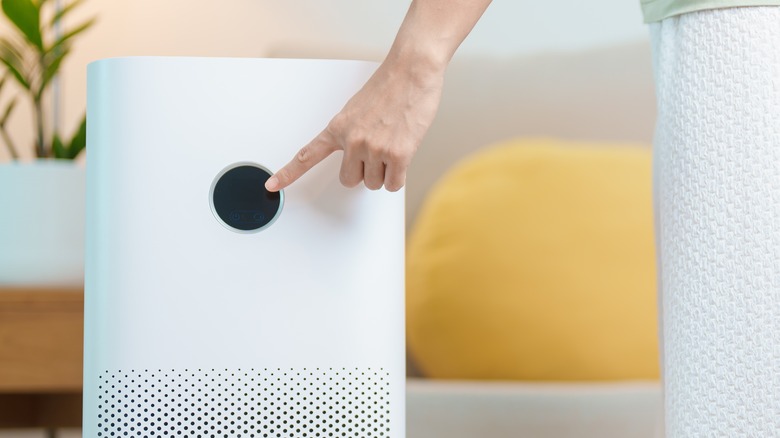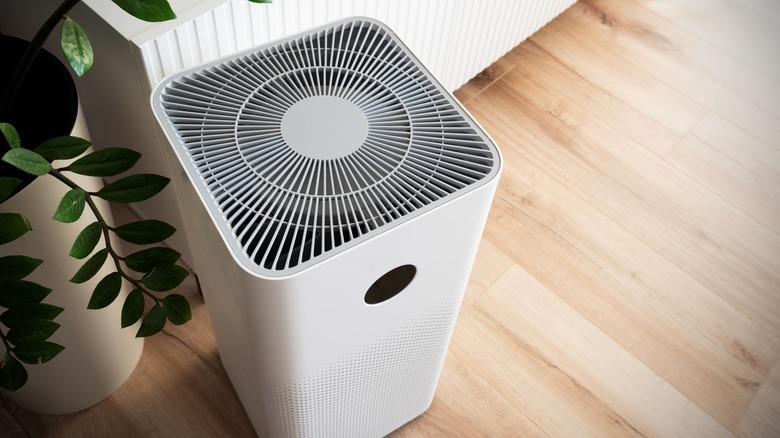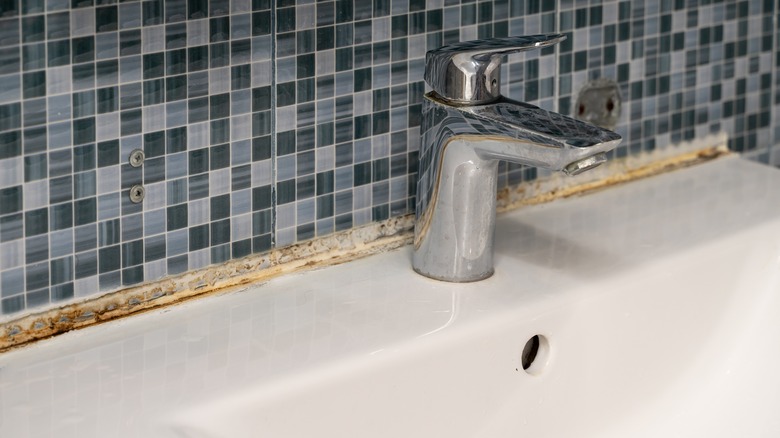Can Putting An Air Purifier In The Bathroom Limit Mold Or Is It Asking For Trouble?
The bathroom is a place people retreat to for relaxation and to get clean after a long day. No one wants to clean up in a room that's dirty, which is why it's so important for these spaces to be disinfected on a regular basis. But even if you clean your bathroom regularly, did you know that it's common for these spaces to contain mold that can be dangerous to your health and overall well-being? In fact, the Indoor Air Quality Scientific Findings Resource Bank analyzed scientific data and found that just under 50% of homes in the U.S. have some form of mold or dampness issue. Some people may assume that air purifiers are the best mold solution for their bathrooms, but are these machines the ideal choice for the job? Overall, while air purifiers can help prevent mold growth in the bathroom, they can also be damaged by the humidity. It's crucial to also reduce the moisture in the space.
Air purifiers are designed to reduce pollutants by pushing air through a filter before recirculating it, which sounds ideal in theory to keep your bathroom clean. However, one of the main causes of mold growth is excess moisture, making this a challenging scenario to tackle. Still, air purifiers can be helpful tools in mold-fighting arsenals if they're used correctly for maximum efficiency. Here's a deeper look into using an air purifier in the bathroom and some ways to prevent mold from entering your home.
Positioning is key when it comes to air purifiers
Even if you take the time to disinfect your shower and other frequented bathroom spaces, the damp nature of these areas is ideal for budding mold spores. While air purifiers won't lower the moisture in a bathroom, they can remove toxic mold spores from the air, thereby keeping the mold from continuing to grow. If you opt for an air purifier in your bathroom to help with mold prevention, there are some steps to take to make sure it's working effectively. One of the most important steps is positioning the air purifier somewhere where there is adequate air circulation. This means keeping it in a location with constant airflow at least 3 feet off the ground. Obstructions around the unit, like being placed against a wall or behind a plant, can affect airflow and have a significant impact on the machine's effectiveness. Further, for an area like the bathroom, HEPA filters are an ideal choice for reducing spores thanks to their ability to remove incredibly small particles.
There are also some risks that come with using an air purifier in the bathroom. High humidity levels can decrease an air purifier's ability to remove pollutants and may require filters to be changed more often than when used in dry areas. Additionally, data from Smart Air testing found a slight decrease in HEPA filter performance when humidity levels were over 75%, placing extra strain on the purifier.
More efficient ways to prevent bathroom mold
Air purifiers excel at improving indoor air quality, but adding a dehumidifier to the mix can be a game-changer to reduce humidity levels and therefore really control the growth of mold in your space. These devices take in the moisture from the air and turn it into liquid water. While dehumidifiers also have an air filter, they don't actually purify the air, so having both an air purifier and a dehumidifier in the bathroom can be beneficial. The Environmental Protection Agency (EPA) advises that humidity levels in residential homes remain under 60% to reduce mold growth. To achieve this, select a dehumidifier with a pint capacity relative to the square footage of your bathroom. For example, small-sized dehumidifiers with an 8 to 20-pint capacity can typically manage moderately wet environments like bathrooms.
If a bathroom exhaust fan is installed, try using this in conjunction with an air purifier and dehumidifier as well. These ventilation fans work to draw out excess humidity and can help take some of the excess work off any other machines running. Some additional ways to prevent mold from growing in the bathroom are by fixing any leaks or plumbing issues promptly and maintaining a regular cleaning schedule. If you do notice growth in your bathroom, there are quite a few easy ways to clean mold in your home. However, if the mold growth is extensive or you experience adverse health effects, consult a professional mold removal specialist.


